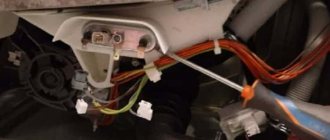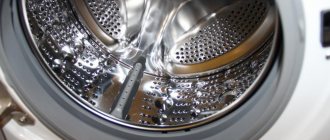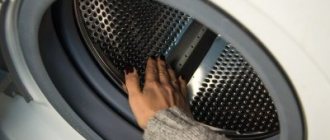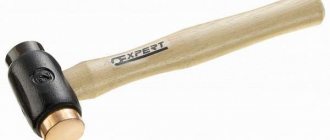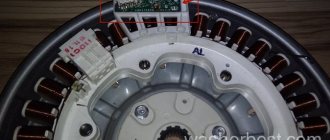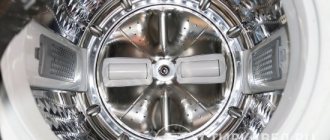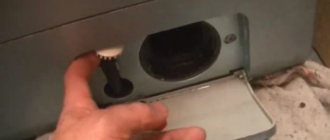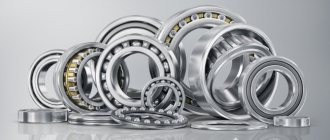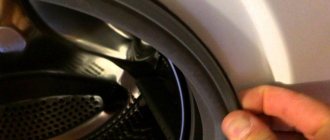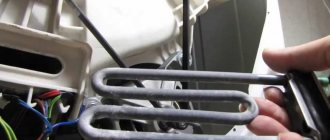You habitually loaded the washing machine, turned on the wash, and after a while you discovered that the drum does not spin.
- If the program has started, but no water appears in the tank, then you have problems with drawing water, read the article “The Indesit washing machine does not draw water.”
- If the machine washes normally, but the drum does not rotate only during the spin cycle, see the article “The Indesit washing machine does not spin.”
- If the Indesit washing machine stops with water and does not spin the drum, then you have problems with draining, read the material “10 reasons why the Indesit washing machine does not drain water.”
In this article we will consider the situation when the washing machine turns on, the program starts, water is drawn in and drained as usual, but the drum does not rotate. Indesites with a display can issue codes F01, F02.
Reasons why the drum does not spin in the washing machine
A home washing machine can break down for several reasons. To find them, you need to determine at what stage the stop occurred. Based on this, the issue of repair is decided. Before self-diagnosis, you should perform several steps:
- wait for the program to stop (forcefully terminate);
- disconnect the machine from the network;
- drain the remaining water;
- remove laundry;
- Remove the side (rear) panel.
Foreign object
Torn items of clothing or forgotten items from pockets sometimes end up in the space between the drums and the tank where the heating element is located. Everything that gets there sinks to the bottom, winds up on the shaft (if flexible and long) or gets stuck between the walls. In this case, an obstacle to rotation is created and the drum stops.
If a foreign object partially protrudes into the drum, it can be removed without disassembling the machine. Otherwise you will have to remove the heating element. Shine a flashlight into the opened hole to find the source of the stop. Using a wire hook, the object is removed.
Bearing jammed
The rotation of the drum may stop due to wear of the support bearing. Depending on the design of the washing machine, there may be one or two of these elements. After long-term use, worn out oil seals begin to leak water, corrosion occurs and the bearing jams. The problem is solved by completely replacing worn out elements. To do this, you need to have certain skills or contact a repair shop.
The belt drive has fallen off or broken
The transmission of rotation from the electric motor to the drum is carried out using a belt drive. A belt breaking or slipping off the pulleys disrupts the connection between the elements. In this case, the drum rotates freely by hand, and the motor hums when voltage is applied. To fix it you need to get to the engine and large pulley. Washing machines use V-belts or poly-V-belts. To install, you need to loosen the engine mount and ensure that the grooves of the mating parts match.
Engine failure
An electric motor is a fairly reliable unit, but it can also stop. Main reasons for refusal:
- wear of commutator brushes;
- short circuit of winding turns;
- winding breakage at the stator or rotor;
- failure of voltage supply contacts.
Electric motor commutator brushes are made from carbon powder. To ensure good contact, they are pressed with special springs. During operation, the brush material wears out and their length decreases. At some point the size becomes minimal and contact is broken. The malfunction can be easily eliminated by replacing worn out elements.
When the winding turns are closed, the drum can move without load, but during washing the network protection against short circuit will work. When the engine is turned on, it will hum but not spin.
A broken winding or interruption in the power supply will also cause the motor and drum to stop. The last reason for failure is the most harmless, as it can be eliminated by restoring contacts. All others will require removal of the electric motor and its inspection. In some cases, repairs in specialized workshops or complete replacement of the engine will be required.
Control module malfunction
The control module is the electronic “brain” of the washing machine. If it does not issue the appropriate commands, the unit will not work. Electronics fail for several reasons:
- the supply current parameters deviate from the permissible limits;
- low-quality elements of electrical circuits;
- violation of contacts;
- natural wear and tear;
- program failure.
Initially, you should try to reset the programs. Some washing machine models have a self-test function; by running it, you can determine the cause of the problem. If performance is not restored, removal and diagnostics of the electronic unit will be required. To repair it you need to have specialized knowledge.
The flaps in the vertical washing machine opened
Occasionally, the drum of vertical washing machines stops due to the opening of the loading doors. It's good if the car stops immediately. Otherwise, the heating element, the walls of the tank and the doors themselves are damaged.
After stopping, you can try to turn the drum by hand until the loading hatch appears. If that doesn’t work, try to hook or close the doors with a wire hook, pushing them through the holes and lighting them with a flashlight. In extreme cases, you will have to disassemble the tank, provided that it is collapsible.
Overload
All household washing machines are designed for a certain weight of loaded laundry. Exceeding this parameter leads to premature wear of the mechanical components of the unit. Many manufacturers have taken care of the durability of their washing machines and installed special sensors in them, which, if loaded incorrectly, give signals to stop. The corresponding error code is displayed on the display. Further starting is possible after removing excess laundry from the drum.
Drive motor and brushes
If you open the back wall of the machine and see that the belt is in place and the drum rotates easily by hand, then most likely there are problems with the engine. You need to use a tester to check the motor windings for a short circuit or break; also do not forget to check the integrity of the carbon brushes - they can be seen visually; if they are worn out, the contact disappears and it does not turn.
DIY repair
If the washing machine drum does not spin during washing, you can try to fix it yourself. However, devices from different manufacturers differ from each other in some design features and technologies used. Therefore, the repair sequence depends on the model of the washing machine.
Indesit
Let's look at an example of repair using the horizontal loading model WIXL83. If the drum does not spin when the Indesit washing machine is turned on, you should immediately check the belt drive and motor. To repair, the washing machine is unplugged, turned around and leaned on something so that the back wall is free. Next, unscrew the screws securing the oblong hatch, behind which there is a belt drive and an electric motor.
If the belt is intact, then you need to check the motor brushes. Power may not be supplied due to worn brushes or a dirty commutator. The electric motor is secured with two bolts; before unscrewing them, the block with wires is first disconnected. After removal, you can check the length of the brushes and the condition of the commutator. The latter, if necessary, is cleaned to a metallic shine. Short brushes are replaced with new ones.
Samsung
Possible reasons for the drum stopping on a Samsung washing machine are similar to other models. When replacing brushes, you need to make sure that they move freely in the brush holders. Sometimes, due to accumulated contaminants, the forces of the springs are not enough, and the contact is broken. When the electric motor operates, coal dust gets into the gaps and the brushes jam. The problem is solved by removing the brush holders and cleaning the holes.
Another reason for stopping the electric motor is a breakdown of the tachometer located on the rotor. It records the engine speed and transmits information to the electronic control unit. In appearance, the knot looks like a small metal ring, sometimes covered with a plastic casing. There are 2 small diameter wires coming from it.
The tachometer is checked with a multimeter (tester) in ringing mode. The wires are connected to the device and the rotor of the electric motor is rotated by hand. If the sensor is working properly, the multimeter will make short sounds (the needle oscillates). Otherwise, replacement will be required.
LG
In an LG washing machine equipped with a direct drive from an inverter motor, the drum does not spin or jerks slightly due to a broken Hall sensor. When you try to turn it on, a whistling sound is made.
To access the engine, you need to disconnect the unit from the mains and remove the back cover, which is held on by four self-tapping screws. Next, unscrew the central engine bolt. To do this, you will have to fix the rotor. A screwdriver is inserted obliquely into the upper vertical slot of the protective disk and pressed against the head of the hidden bolt. Then unscrew the 6 fasteners of the disk with coils and remove it.
On the back side of the removed element there is a Hall sensor. It is fixed with plastic latches, and the connector is disconnected before dismantling. Use a knife or flat screwdriver to pry up the fasteners and the sensor is easily released. Having replaced the damaged element, everything is assembled in the reverse order.
Bosch
When the drum stops in the Bosch Maxx 5 washing machine, error F21 appears on the display. The machine does not carry out the program and does not fill with water. First, after disconnecting from the network, you need to check with your hand the free rotation of the drum. If everything is in order, inspect the belt drive. Access is via the rear hatch.
If the belt is intact, you need to remove and check the electric motor. To do this, perform the following steps:
- remove the belt;
- place the machine on its right side;
- remove the bottom cover (you will need a T20 sprocket);
- disconnect the block with wires from the engine;
- unscrew the 2 mounting bolts;
- remove the engine.
The tachometer is checked by ringing with a multimeter. If it is in good working order, you need to remove the brushes and replace them if necessary. The sequence of disassembly and assembly of the Bosch Max 4 and some other models in this series is similar.
Beko
The main reason the Beko washing machine drum stops is wear on the brushes of the commutator motor. When turned on, the machine draws water, and then stops showing signs of life. The algorithm of actions for replacing them is standard, but there are some features. Access to the engine is through the rear hatch. By unscrewing the screws and removing it, you can inspect the internal mechanism.
Before removing the engine, you need to release the transmission belt and disconnect the block with wires. The electric motor housing is secured with two bolts with heads that have sprocket cutouts; to unscrew them you will need a T40 socket.
The brushes are inserted into special holders, which are secured to the motor housing with screws.
After replacing the worn elements, everything is reassembled in the reverse order.
Zanussi
Replacing brushes in a Zanussi washing machine is not difficult. But you won’t be able to get to the engine through the rear wall. To implement your plan, you need to place the machine on the floor face up. From below there is access to the motor. It is not necessary to remove it. The brush holders are fixed with self-tapping screws; they are removed after first unscrewing their fasteners and disconnecting the connectors.
The lack of contacts may be due to wear, jamming of the brushes in the guides, or contamination of the armature with coal dust or burning. All causes must be checked and eliminated. The plastic brush holder is disassembled into two halves and the metal guides and brush are removed from there. If you don’t have the part you need for this particular model, you can look for a replacement. It is enough to select brushes of suitable sizes from other units, you just have to solder the wires.
Electrolux
The Electrolux dryer also has a drum, which due to malfunctions one day refuses to spin. The main reason for this problem is wear of the support rollers on the engine or housing. The problem is solved by replacing them. To access the internal mechanisms, remove the side walls and top.
The engine is not removed, but only the tension spring on it is unhooked with pliers. After this, the entire assembly can rotate freely. Next, the old video is removed and a new one is installed in its place. The compressor housing interferes with these manipulations, so it will have to be tilted slightly. Before installation, the shaft is lubricated. Then I set the belt straight and put it on the engine. The drum is rolled by hand several times to obtain the parts of the working position. At the end, fix the tension spring and secure the side walls.
"Ariston"
In addition to the listed reasons for the drum not rotating in washing machines, there are unusual cases. One of them is broken wires. This sometimes happens after inattentive self-repair after removing the engine or drum.
In the Ariston washing machine, the electronic unit is located on the rear wall at the bottom left. The blocks with wires are connected from the inside and directed inward. When performing any manipulations or moving large components, an unintentional impact on these elements is possible. As a result, the pads are crushed or the wires are torn off. Moreover, the gap may not be visible, but there is no contact.
Therefore, before repairing the electronic unit, you should carefully check the integrity of the connections with the device; perhaps the malfunction occurred due to missing contacts. Please note that the connecting blocks are made of thin plastic and disassembly must be done carefully.
"Ardo"
A malfunction occurs when a full drum tries to turn during washing, but cannot, spinning does not occur. It feels like there is not enough power. This is typical for washing machines with asynchronous motors, such as Ardo. Power loss occurs due to a decrease in the capacity of the starting capacitor.
If you open the back wall of the Ardo washing machine, the part you are looking for can be found at the top right above the drum. Using a 12 mm socket, unscrew the fixing nut and remove the capacitor. The failed part must be replaced with a similar one. Ardo has a 16 mF capacitor. If you install an element with a larger capacity, the engine will overheat, if you install a smaller one, the power will be lost.
Official warranty from the manufacturer
By contacting our Miele online store, you can choose the equipment you like from the entire model range of the brand. The equipment that is sold in our online store and presented in showrooms has all the necessary certificates and is 100% original. In addition to a wide range of household appliances, the manufacturer provides a 24-month warranty on household appliances and provides its customers with an optimal level of service.
The user can get acquainted with Miele appliances live by visiting one of our showrooms in Moscow, which presents both new products and the most popular models of the brand. In addition to washing machines, in our store you can buy high-quality refrigerators, unique dishwashers and dryers, which will be an excellent addition to your collection of German household appliances.
Features of repairing top-loading washing machines
Top-loading washing machines are compact in order to save space in the room, many people prefer them. The small size of the unit creates certain difficulties for disassembly and diagnostics. Before you decide to fix the breakdown yourself, you should know the features of repairing washing machines of this design:
- long and difficult disassembly;
- access to nodes is difficult;
- complexity of the device, special equipment is required;
- risk of accidental damage to other parts due to compactness.
Professional models
Household appliances from Miele have proven to be incredibly reliable assistants not only at home, but also in business. The professional line of washing machines provides the highest quality washing and can be used in catering establishments, hotels and even on ships. The devices are manufactured with an increased level of reliability and are designed for long-term use in conditions of almost round-the-clock operation.
Thanks to the use of multiple sensors, the washing process takes place virtually without human intervention, and the quality remains consistently high. Some models are equipped with a special water purity sensor, which analyzes the level of contamination and can change the washing program to ensure the best result. The use of such devices allows you to get clean clothes and ensure maximum savings in water and energy, which is very important for commercial applications.
Professional washing machines also have a patented adapter for dispensing liquid detergents, which eliminates the hassle of manually adding powder or fabric softener to the user. Models are equipped with an optical interface, which greatly simplifies maintenance, as well as intelligent control systems with an intuitive interface.
How to avoid breakdown
In order for your home assistant to work flawlessly for a long time, you must follow several rules:
- Install the device strictly according to the instructions.
- Use high-quality detergents and water hardness softeners.
- Observe drum loading standards.
- Before loading dirty clothes, empty pockets and close zippers.
- Clean regularly, either manually or using a special program.
- If the electrical current parameters in the network deviate from the norm, use a voltage stabilizer.
- After completing the wash, disconnect the unit from the power supply.
The simplest solution
However, there is no need to panic in advance. In about 10% of cases, the washing machine can be fixed in a fairly simple way - turn it off and on. Naturally, between these actions it is necessary to maintain a certain pause of 20-30 minutes. Sometimes the cause of the malfunction may be a “glitch” of the programmer, which will be corrected after rebooting it.
Sometimes a broken machine can stop right in the middle of the washing process, which will cause a number of problems, because... Wet laundry remains inside the tank, and you can wait from several days to a week for a repairman. In this case, you can use several methods: drain the water through the drain filter, use the emergency cable to open the hatch, or open it yourself using a wire or rope. In some cases, you can remove the rear drain hose, which forms a special elbow, and lower it off the floor. After this, the water will drain under the influence of gravity. It is better to wash the released laundry by hand or soak it in a suitable container. These manipulations will not harm further diagnostics or repairs of your car.
Electronic module
If there is damage in the motor control circuit, the module cannot control rotation. Reasons that lead to this:
- continuous use of the SMA without interruption;
- overload;
- power surges in the network.
In this situation, a new module is purchased that matches the washing machine model, or the old one is restored. To do this, you need a good electronics specialist who understands the operating principles of an automatic washing machine.
Control module
All actions must be carried out on the removed board and motor. This is possible with partial disassembly. It is very important to disconnect the machine from electricity and water supply before doing this.
We also note that this breakdown is typical for all SMA brands, for example, such as: Samsung, (), Bosch, Electrolux, Zanussi, Ariston, Indesit, Virpull, Kandy ", "Hansa", "Gorenje", "Ardo", "Beko", AEG, "Miele", "Siemens", "Kaiser" and "Atlant".
